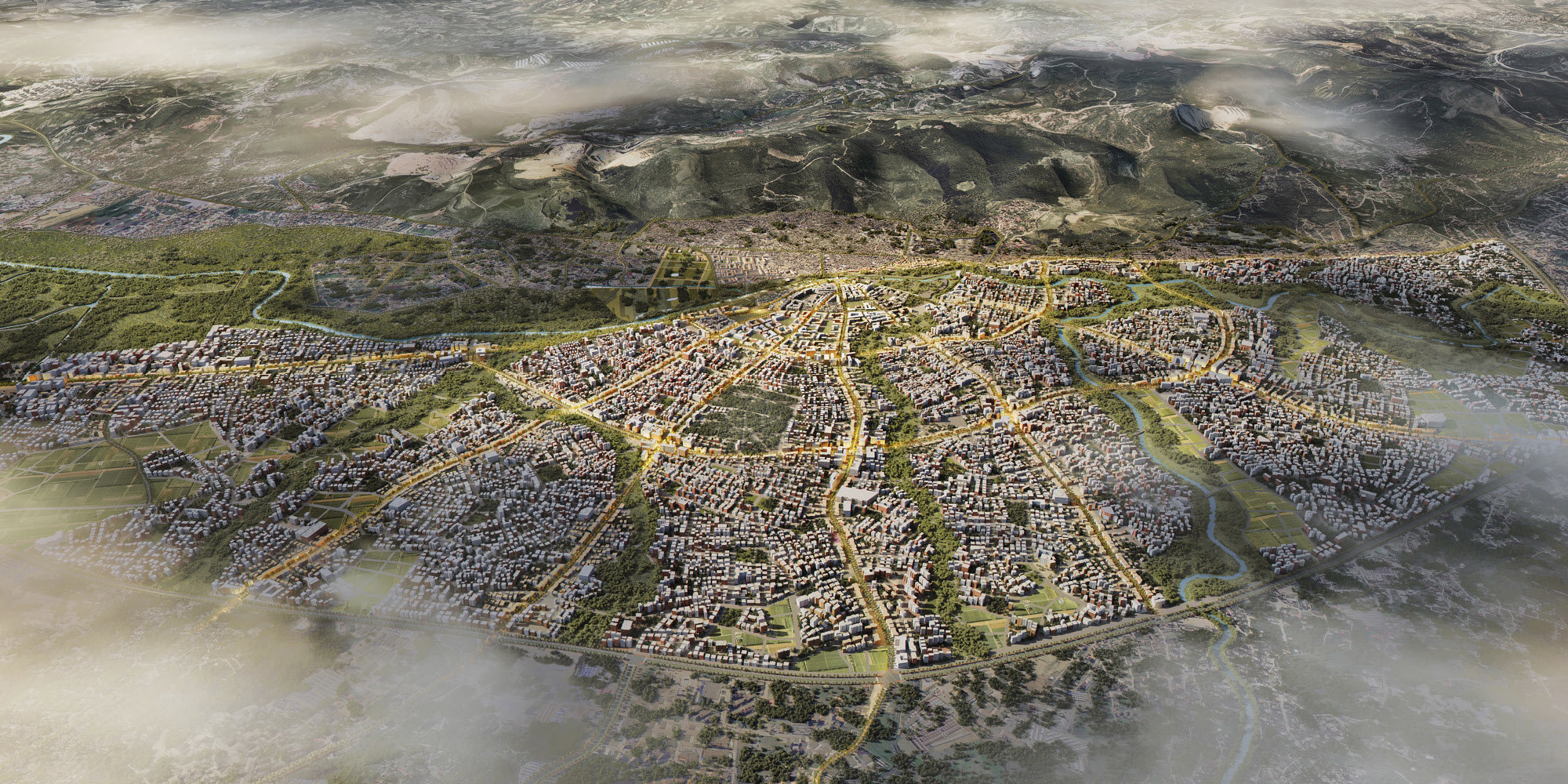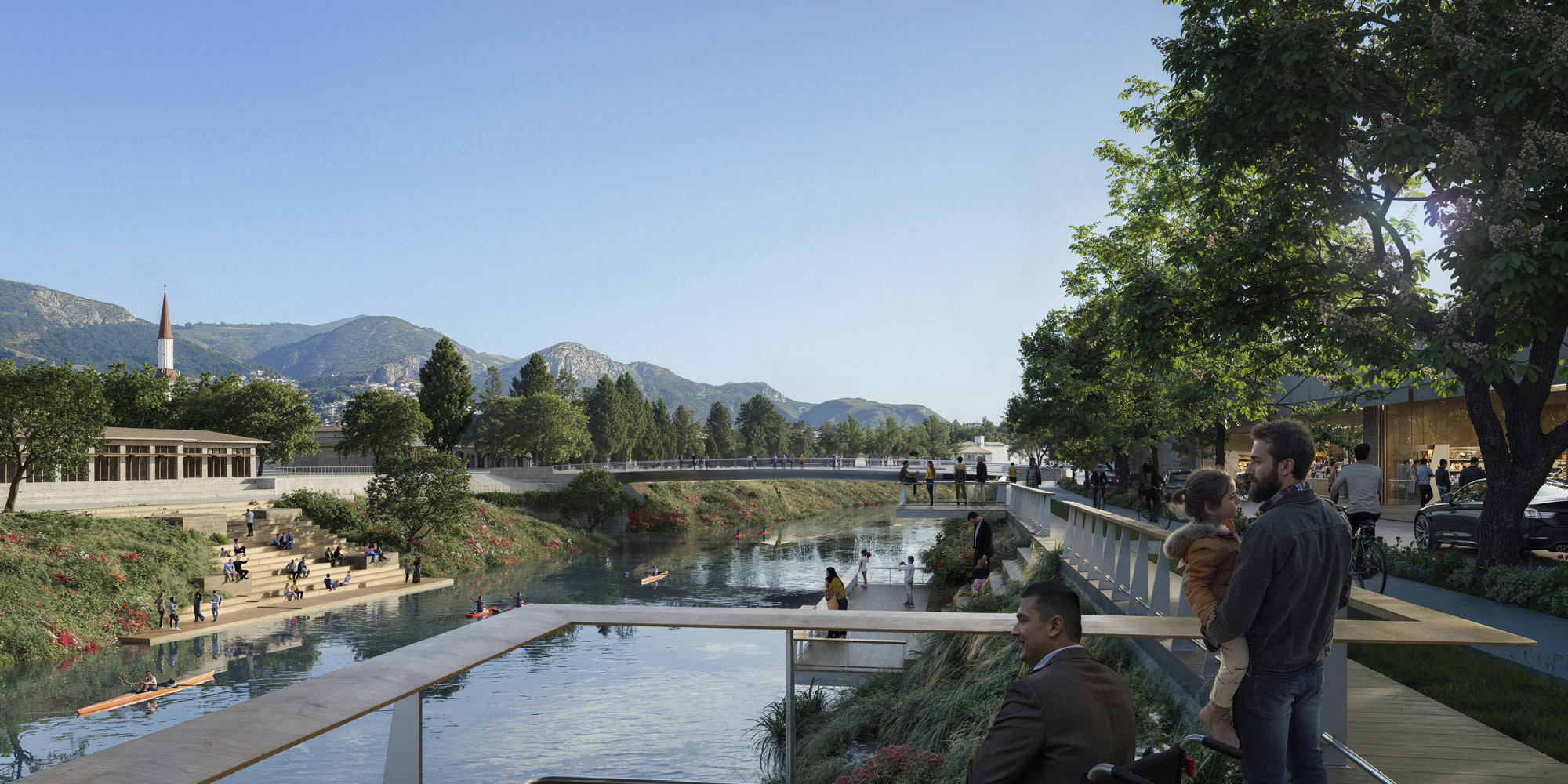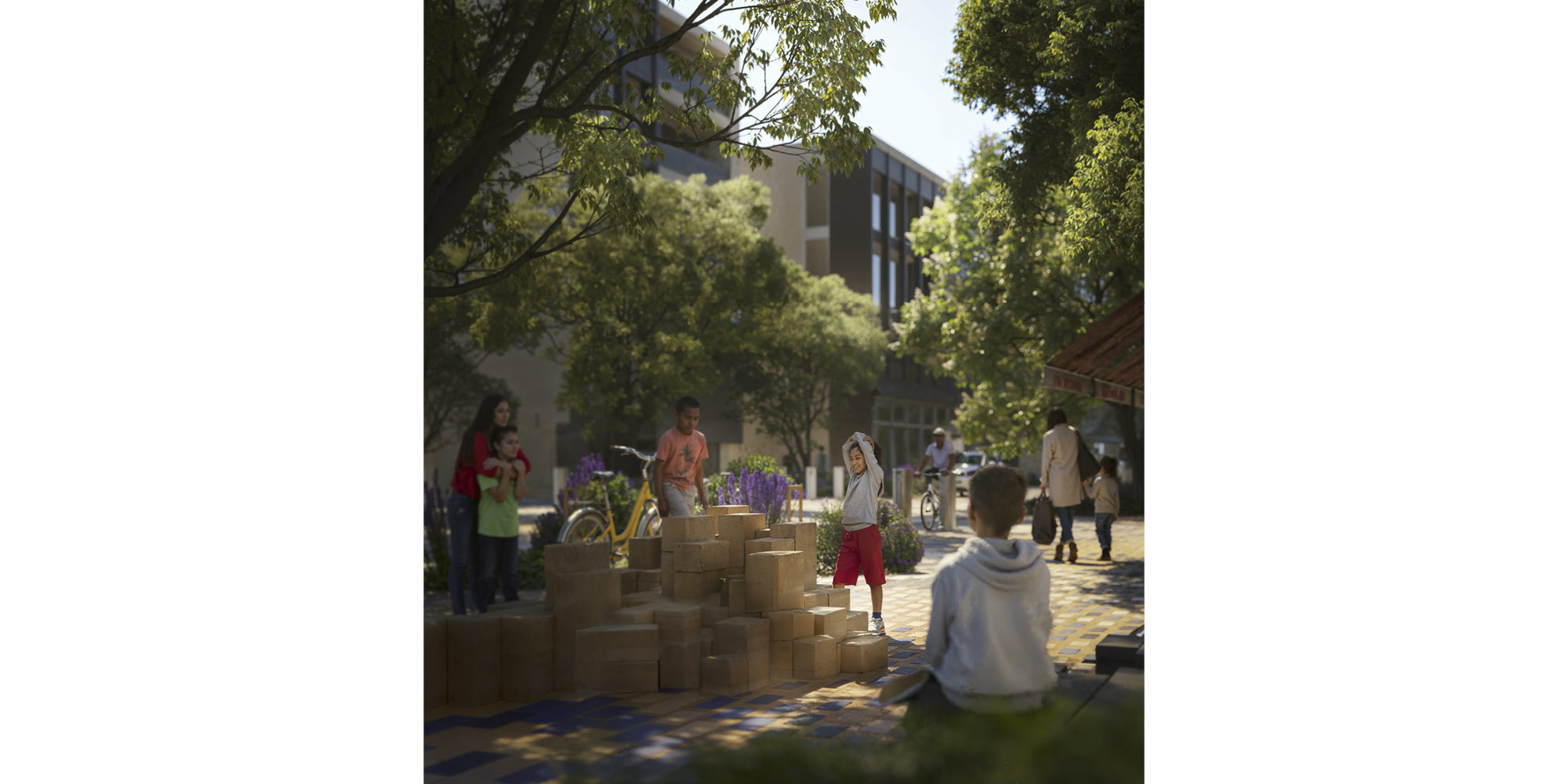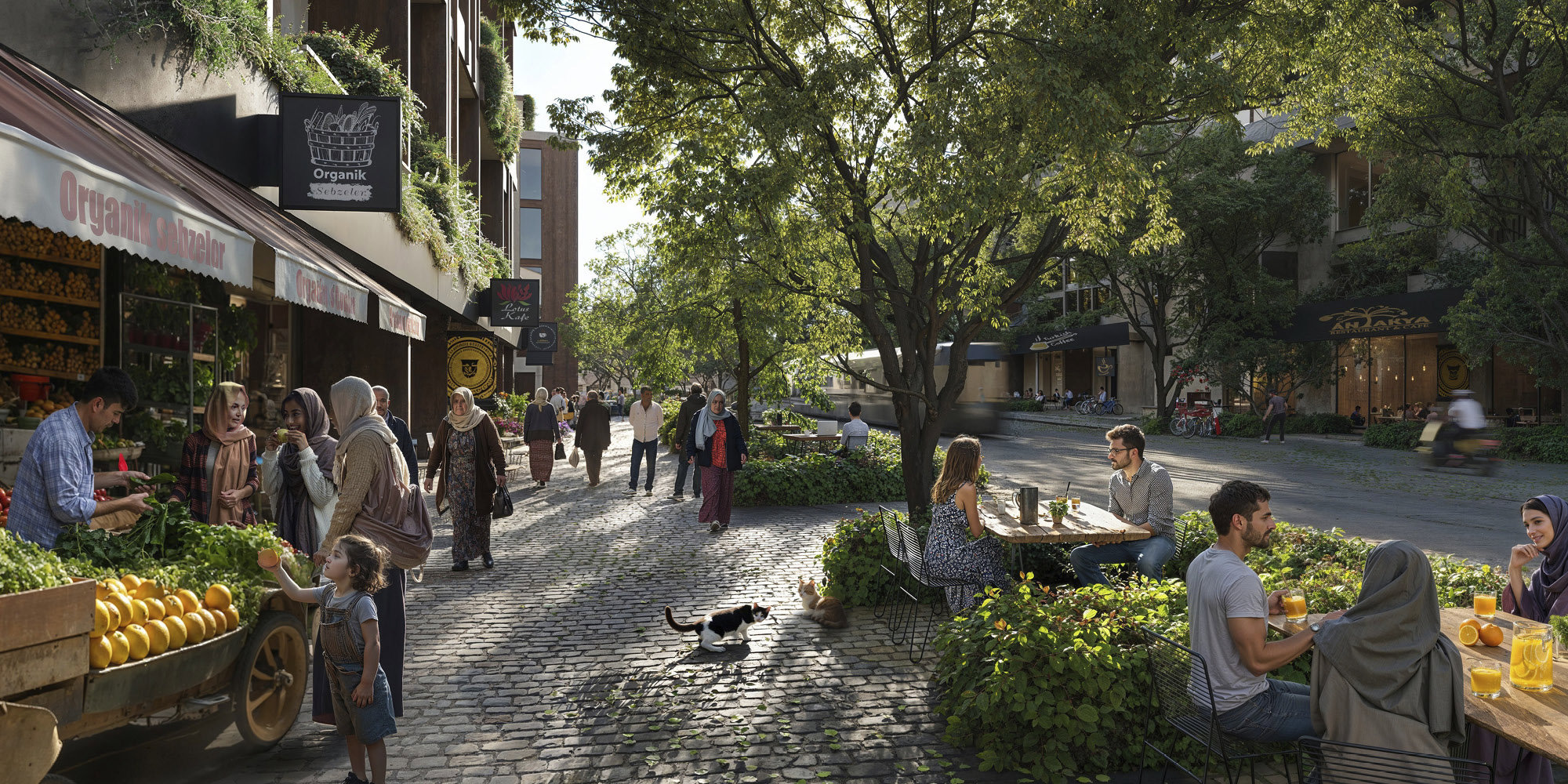A new urban vision has been revealed for the revitalisation of Antakya and the wider Hatay province in southeast Türkiye, after the devastating Türkiye-Syria earthquake on 6 February 2023.
Following an initial six-week pro-bono strategic study by the practice, a masterplan vision for Antakya has been developed by Foster + Partners, Buro Happold, MIC-HUB, and leading Turkish practices DB Architects and KEYM Urban Renewal Centre. It is part of a wider design-led revitalisation process spearheaded by Türkiye Design Council (TDC), an NGO that has brought together international and local architecture, planning, urban design and engineering experts in the wake of the earthquake.
The Foster + Partners masterplan covers a 30-square kilometre area of Antakya, Hatay’s capital district and one of antiquity’s most important cities (Antioch), and presents a set of eight design principles to define emerging plans for the wider Hatay province. It builds on earlier and ongoing work by TDC’s Hatay Collaboration Group of architects to quickly and carefully develop plans to rebuild the region.
With an estimated 80 percent of the city destroyed, there is an urgent need to reimagine and rebuild for future generations. The masterplan aims to retain the cherished spirit of the town and pre-earthquake characteristics in terms of scale, relationships, and configurations, reinforcing the local character and climate. It enhances accessibility and inclusivity, through the creation of new public green spaces, efficient transportation systems, and community hubs, while also increasing the city’s resilience.
A significant part of the process has been understanding and embedding Hatay’s rich history into the vision. Other recent and historic disasters have also been used as case studies, with comparable rebuild attempts used to distil best practice that will support a sustainable future for Antakya.
The masterplan seeks to respect the urban character of the area and build anew in a way which makes the residents feel like they can be at home in the revitalised city. The design principles stipulate the need to retain the character of the historic streets of Antakya, overlaying on the existing road network and retaining the building scale and façade rhythm.
Türkiye Design Council's revitalisation efforts are being supported by the Turkish Ministry of Environment, Urbanisation and Climate Change, and the Ministry of Culture and Tourism.
Foster + Partners Masterplan: Eight Design Principles
- Build on safe land
The masterplan proposes protected zones around the waterbed and accounts for projected rises in water levels to designate new buildable land. There are also new green buffers and soft edges, creating more space for water runoff. Turning challenges into opportunities, these measures will enhance safety while providing greater urban greenery.
- Improve circulation
The new road networks largely follow existing patterns, retaining the arterial roads that extend from Cumhuriyet Meydanı. Additional connections have been strategically added to promote walkability. As part of these improvements, street sections have also been carefully adjusted. A significant focus is placed on Cumhuriyet Meydan, transforming it into a pedestrianised and public transport-only zone.
- Improve open spaces
By rationalising river and stream edges and enhancing the density of the road network, the masterplan paves the way for the creation of more evenly distributed and diverse open spaces. Embedded within this heterogeneous network are various types of urban green spaces - programmed and community-focused - alongside new city parks, nature walks, community plazas, playgrounds, and pocket parks. These enhancements aim to elevate the urban experience and double the dedicated green space per capita.
Significantly, the Asi River edge will become a new river park north of Ataturk Park with views of the old cityscape and mountains, offering accessible waterside retreats for residents.
- Create new districts
The masterplan identifies thirteen new districts, each defined by a stream or a primary road as its perimeter and a high street with retail and commercial uses as the main spine. Open space and greenery is well-distributed throughout, with a network of local parks and plazas. Community and social facilities are placed at the heart of each district as a point of reference for residents. Each district is further broken down into neighbourhoods and clusters.
- Layer neighbourhoods
Neighbourhoods function as superblocks, featuring their own integrated circulation systems: parking, one-way shared roads for private cars, dedicated paths for soft mobility and pedestrians, and public transit stops.
The massing of buildings designed to respond to local climate conditions including prevailing wind and sun direction, and importantly, each building will be treated individually in terms of its architecture to preserve the diversity of the streets of Antakya.
- Enhance connectivity within neighbourhoods
The local high streets will be rich in social infrastructure, including schools, community gardens, cooking schools, libraries, cultural centres, local coffee roasteries, and educational facilities-spaces that enhance community resilience and wellbeing.
Community routes provide an additional layer of resilience, linking the neighbourhood centres where social amenities and plazas are located. Finally, pocket gardens, plazas, and parks are introduced and connected by pathways, ensuring residents have easy access to green and open spaces.
- Enhance connectivity across the city
An efficient bus transit system is established, featuring multimodal hubs located at major intersections on the city's bypass road.
- Build back
Looking to the future, the aim is to redistribute density and build more compactly. By densifying the city centre and key commercial axes (including high streets), the masterplan limits urban sprawl beyond the outer ring road. This approach would allow for the same level of development within a smaller, more compact area.
Carefully selected building typologies will restore and improve the feel of the streets of Antakya, with key urban elements reinstated in order to provide a sense of connection to the past streets and help communities rebuild their social dynamics.
Furkan Demirci, Chairman of the Türkiye Design Council, said:
“Having worked with local experts, global talent, 53 teams and over 1,000 people to date, it is fair to say that it has taken an unprecedented collaborative effort to reach this point - one that we hope will set a new standard for post-disaster recovery that puts communities at its heart. It is our hope that the vision Foster + Partners, Buro Happold and MIC-HUB have created alongside the local people of Hatay, as well as Turkish experts like DB Architects and KEYM Urban Renewal Centre, will lay the foundation for a prosperous future for this special place.
We feel an immense responsibility to deliver designs that recognise the rich cultural and historical legacy of this place, while also serving existing communities and future generations. There is still plenty of work to be done, but today we are honoured to share this masterplan vision with the world.”
Bruno Moser, Senior Partner, Head of Urban Design, Foster + Partners said:
“We have been inspired by the resilience of the people of Antakya, and share their passion for their unique, historic city. Our strategy does not offer a ‘one size that fits all’ vision. It balances the historic spirit of the place with improvements and enhancements that will support a sustainable future for Antakya. We have developed the vision underpinned by the fact that reconstruction following a natural disaster is not merely about buildings but about rebuilding communities, feelings of safety and belonging, and rebuilding trust.”














